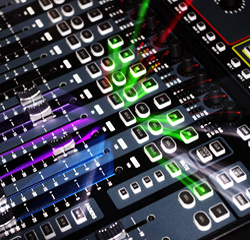Over many years in this business, it’s been pretty amazing to watch how our tools have been impacted by technological advances and also how we’ve been rather accepting of these new directions, particularly with respect to digital mixing consoles.
Sure, the first digital boards had issues and limitations, with too few inputs, basic EQ, and limited routing capabilities, but as time and technology has caught up with the concept, they’ve became powerful tools. Today’s offerings deliver capabilities I didn’t even dream about 25 years ago, such as remote access and networking capabilities.
Inevitably, as soon as one manufacturer comes up with a new feature, others are bound to emulate it, if not improve upon it. That’s when we see something that’s unique develop into a trend, and then often, become a norm.
Wireless live access via remote apps for iPad tablets, as well as remote offline editing, are prime examples. From big to small and at a variety of price points from a wide range of providers, there are multitudes of models offering this nifty (and convenient and time-saving) feature.
As an “old soundman” in my own rite, I love to twiddle knobs, but I wouldn’t think of investing in a digital console today that didn’t offer me the ability to walk around the venue with my iPad and make adjustments. It’s just one of those things that makes the job much easier, and I guess I’m not alone in that regard.
Networking is another trend that became a standard. Early digital boards had little to no networking capabilities, but as soon as a couple of manufacturers began offering even limited digital connectivity with AES outputs (and MADI for recording feeds), it took off. Next we saw stage boxes on digital transport, and these closed systems gave way to true networking applications where multiple components could all share audio data.
Speaking of networking, console makers came up with their own proprietary protocols, usually incompatible with everything else. While MADI became a standard for recording feeds and some stage boxes, its point-to-point architecture is limited on larger productions and more complex setups. While many providers still use their own protocols, most also offer integration via replaceable option cards, built-in ports and “bridge” hardware devices.
And ever heard of Dante? It too started small, became a trend and then snowballed to become a de facto standard in the audio world. The ability to attain high-speed, low-latency routing using standard switches sounds simple now, but it was mind-blowing when Dante hit the scene, and it continues to have significant impact in how we design and deploy our systems, with digital consoles at the hub of those efforts.
So what’s next? Let’s take a look at some recent developments from around the digital console universe and see if we can ascertain where things might be going. Note that this isn’t intended to be comprehensive, but rather an overview of innovations that have caught my eye of late.
















